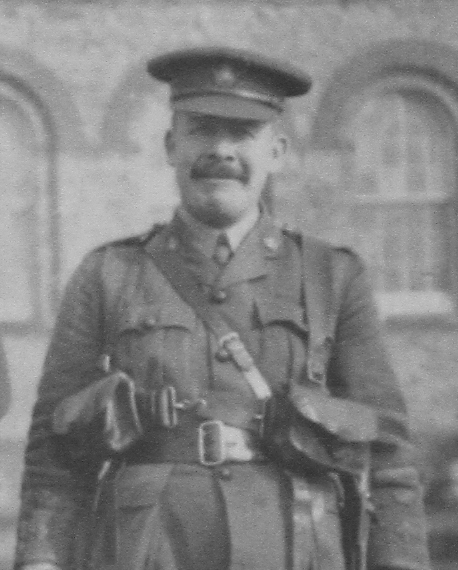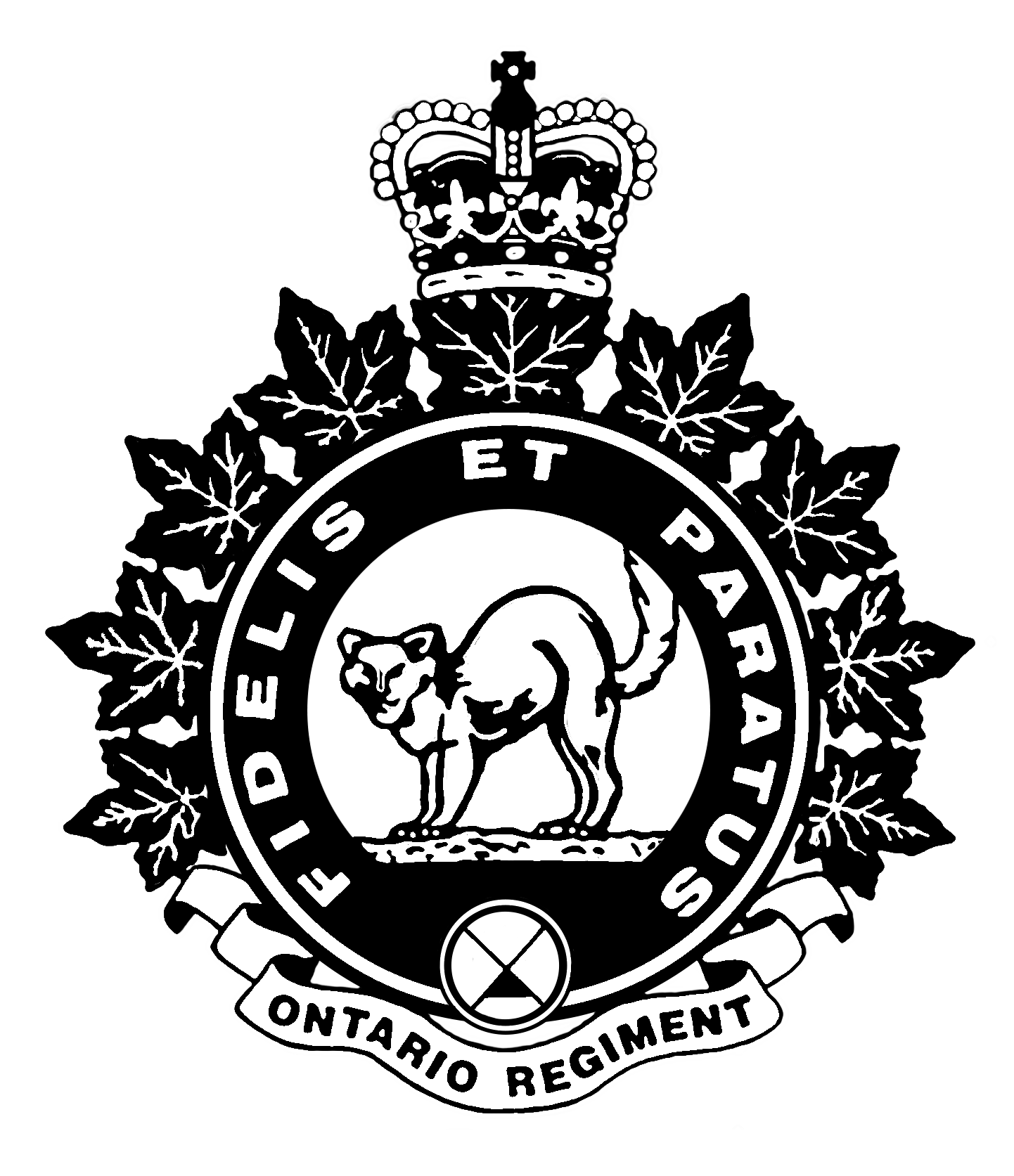During the First World War there were 258 numbered battalions raised specifically as infantry to serve in Europe as part of the Canadian Expeditionary Force. Of these, only 45 served intact in combat. The others were broken up upon arrival in England and the soldiers sent in drafts to existing battalions as reinforcements. This was increasingly common by the time the 116th Battalion landed at Liverpool in July 1916. The 116th Battalion was the last of these battalions to survive intact. A few subsequent battalions did arrive in France, but they all served as pioneers, railway troops, or forestry troops. None served as infantry.
Given these circumstances, how did Lieutenant Colonel Samuel Sharpe keep the 116th Battalion intact and arrive in France to fight as an infantry battalion? It all came down to a combination of political connections, personal determination, and fortunate timing.

Mabel Sharpe Scrapbook, Canadian War Museum Archives
Political Connections
The political connections are the most obvious factor as LCol Sharpe was literally a politician. He operated his own law practice and served as town solicitor of Uxbridge for ten years. Sharpe entered federal politics and was elected as a Conservative in 1908 for the Ontario North constituency and re-elected in 1911. He was a serving Member of Parliament throughout the war. The Conservatives formed the government during this time, so it would indicate a level of influence unavailable to the typical commanding officer.

Mabel Sharpe Scrapbook, Canadian War Museum Archives
So, was it completely due to his political connections that LCol Sharpe was able to keep the 116th Battalion together? There was more to it and we don’t have to look any further than Sharpe’s brother William, who raised and commanded the 184th Battalion. Like Sam, William Sharpe was a Conservative politician. He was the Member of Parliament for Lisgar, MB from 1904 to 1915 and was a serving senator from 1916 and onward. Both brothers were commanding officers of battalions and both were politicians in the governing Conservative Party. The difference in the outcome was that the 184th Battalion was broken up for reinforcements upon its arrival in England, while the 116th was not.
Personal Determination
Clearly there was more involved than politics. LCol Sam Sharpe consistently displayed great determination to keep the 116th Battalion intact. The best source for this comes from the letters he wrote to friends.
In a September 1916 letter to his friend William Low, Sharpe stated, “I am doing everything I possibly can to keep the battalion intact, and not have it broken up.” He further added, “…I expect my battalion to be kept together”.
The Uxbridge Journal published excerpts from another letter that was written in mid-October 1916 or later in which Sharpe again declared that, “My ambition is to keep the County Battalion, the 116th, intact.”
An unattributed letter published by the Uxbridge Journal on 12 October 1916 from a member of the Battalion, referred to LCol Sharpe and shared that, “…we understand he will hold the remainder of the boys together and is determined to stick with them to the end.”
Timing
All the political influence and personal determination would not be enough if there was no opening for the 116th Battalion to fill. Timing was also a factor in the outcome of the 116th Battalion going to France as a unit. In November 1916 Sam Hughes was removed as Minister of Militia and replaced by Edward Kemp. The new minister wanted to rebalance the representation of the provinces in the Canadian Corps. With Quebec being over-represented and having trouble with recruiting, Kemp decided to remove two Quebec battalions and replace them with one each from Nova Scotia and Ontario. One of the Quebec battalions slated for replacement was the 60th Battalion. In a February 1917 letter to the Uxbridge Journal LCol Sharpe described the events of recent weeks, leading to the announcement that the 116th would be departing for France. He never detailed his own role, only stating that, “…there was keen competition for the coveted honour of being selected” to be the replacement battalion that would represent Ontario.

Mabel Sharpe Scrapbook, Canadian War Museum Archives
LCol Sharpe’s letters to the Uxbridge Journal, provided great insights into the activities of the 116th Battalion, but he never stated the reason for the Battalion to have been held together or any specifics of the role he played. In a 1963 interview with the CBC, Captain Joe Hughes provided more information on Sharpe’s efforts, noting both Sharpe’s political influence and his determination. Referring to LCol Sharpe, Hughes stated, “He was quite a politician and he fought to keep the Battalion together. He had enough influence to see himself to Colonel Sam Hughes that he wanted to take the Battalion intact to France.”
The CBC interviewer asked Joe Hughes if Sharpe had ever traveled back to Canada to use his connections. Hughes replied, “No, I think he pulled all the wires at Argyll House in London. He was up there, oh, every two or three days I think. There was a lot of politics possibly, you might call it. But he fought, he was a real fighter and he wouldn’t give up on anything. He made his mind up that he was going to take the Battalion, the Ontario County Battalion, direct to France.”
Argyll House, referred to by Hughes, was the Headquarters, Overseas Military Forces of Canada. This organization was only created on 28 October 1916, so Sharpe would have been using other contacts prior to that.
It was never a foregone conclusion that the 116th Battalion would remain intact. There was some reason for optimism in the summer of 1916 when the Battalion arrived in England because they immediately went into camp and continued training. The normal course of action was that battalions began contributing drafts to existing battalions in France or even broken up entirely within a few days upon arrival in England. The other four battalions that sailed with the 116th Battalion on HMT Olympic suffered this fate and were eventually disbanded.
Morale within the Battalion rose and fell a few times over the course of the summer and autumn 1916. The Battalion was ordered to provide large drafts of men to other battalions already in France during this time, leading to the fear that the 116th would not survive much longer. Soon after each of these outgoing drafts, the 116th received its own incoming draft of men from battalions being broken up, thus bringing the 116th back up to strength.
Due to the three factors of political connections, personal determination, and fortunate timing Lieutenant Colonel Sharpe did keep the 116th Battalion together. Sharpe made the announcement to the Battalion during the last week of December 1916. The 116th landed in France during the overnight hours of 11-12 February 1917, a day after the 85th Battalion did the same. The 116th and 85th Battalions were the first new Canadian battalions to arrive in France since August 1916.
There was a period of integration to get into the routine of trench life. LCol Sharpe and his 116th Battalion replaced the 60th Battalion in the 9th Brigade, 3rd Canadian Division in April 1917. The 60th Battalion was subsequently broken up and its soldiers sent to three other battalions. Sharped managed to accomplish something that very few other commanding officers had been able to do in the previous several months.
Rod Henderson
Rod Henderson is the Regimental Historian of the Ontario Regiment. He served as a Sergeant in the Regiment and is the author of “Fidelis Et Paratus: A History of The Ontario Regiment (RCAC), 1866-2016”.

